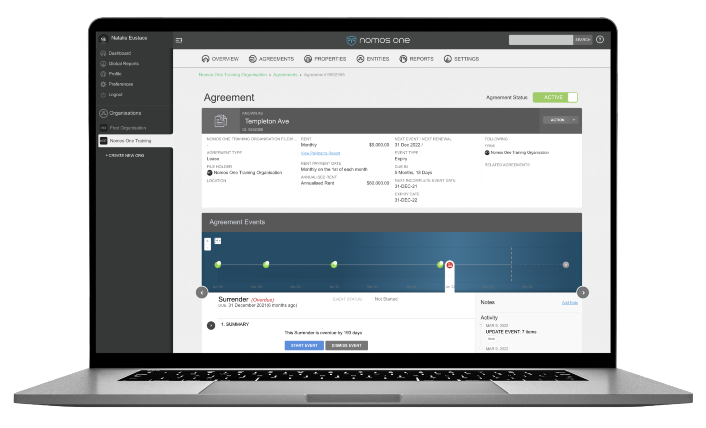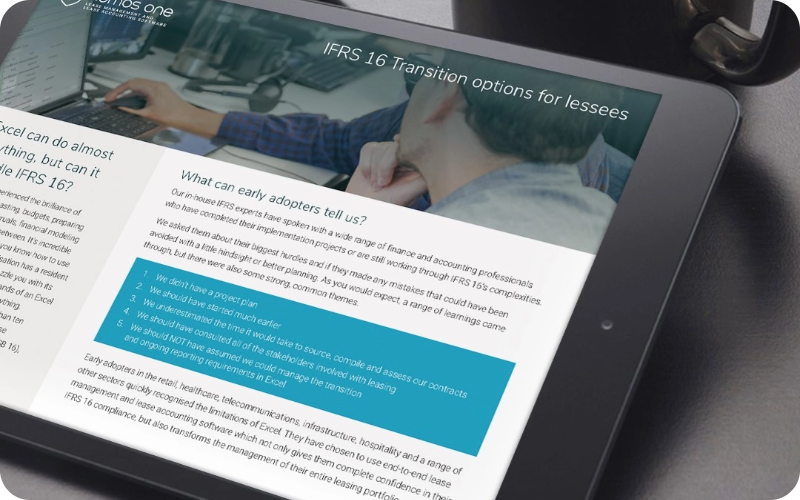Leasing arrangements are a common practice in the business world, providing companies with the flexibility to access assets without the burden of ownership. However, accounting for lease agreements has undergone a significant change with the introduction of the International Financial Reporting Standard or IFRS 16. One crucial aspect that requires careful consideration is accounting for lease incentives.
Join us as we delve into the concept of lease incentives under IFRS 16 and explore the accounting treatment for these incentives.

What are lease incentives?
Lease incentives, also known as lease abatements or fit-out contributions, are offerings provided by lessors to lessees to entice them to enter into a lease agreement.
These incentives can come in various forms, such as rent-free periods, cash incentives, or assistance in covering initial or renovation costs.
The objective of these incentives is to make the lease more attractive to potential lessees and facilitate the occupancy of the leased asset.
Impact of IFRS 16 on lease incentives
Under the previous accounting standard (IAS 17), lease incentives were typically recognised as a reduction of rental income over the lease term. However, IFRS 16 has brought significant changes in lease accounting, introducing the concept of the right-of-use asset and lease liability for most leases.
Under IFRS 16, lease incentives granted to lessees are considered a part of the overall lease arrangement. The standard requires lessees to include the value of lease incentives in the initial measurement of the right-of-use asset and lease liability, spreading the impact over the lease term.
Accounting treatment for lease incentives
Accounting for lease incentives under IFRS 16 involves the following steps:
1. Determine the total lease incentive
At the commencement of the lease, the lessee should assess the total value of any lease incentives received from the lessor. This includes any rent-free periods, cash incentives, or reimbursements of initial direct costs that the lessee is entitled to receive.
2. Allocate lease incentive
The value is typically based on the relative stand-alone selling prices of the lease components (i.e., lease payments and the lease incentive) at the lease commencement date. If stand-alone selling prices are not readily determinable, the lessee may use a reasonable allocation method.

3. Recognise lease incentive
Once the total lease incentive is determined, the lessee should allocate its value into the lease liability calculation, and subsequent right-of-use asset amount.
4. Accounting for rent-free periods
In the case of rent-free periods, the lessee should account for them as a reduction of the lease payments over the term of the rent-free period. This means that the lessee will still recognise a lease expense during the rent-free period, but it will be lower than the contractual lease payments.
In conclusion, accounting for lease incentives under IFRS 16 requires careful consideration of the impact on the financial statements. Lessees must recognise lease incentives as part of the total lease liability, which impacts the lease expense over the lease term. It is essential for companies to adopt appropriate accounting policies and maintain accurate records to comply with the requirements of IFRS 16 effectively.
As lease accounting continues to evolve, businesses must stay informed about the latest standards and ensure compliance to present their financial statements accurately and transparently. Seeking guidance from accounting professionals and utilising specialised lease accounting software can prove beneficial in navigating the complexities of lease incentives and other aspects of the IFRS 16 lease accounting standard.
Adopting a secure cloud-based software solution can help streamline lease administration processes, make achieving IFRS 16 compliance easier, minimise the risks associated with human handling, and ensure that stakeholders work with reliable information.

Nomos One is specifically designed to handle the complexities of regulatory requirements, such as IFRS 16. The software facilitates accurate lease calculations, lease classification, and financial reporting, empowering companies to make strategic choices to improve their lease portfolio efficiency and financial outcomes.
For more information, book a demo with our team and discover the advantages our software solution can offer to your organisation!

























